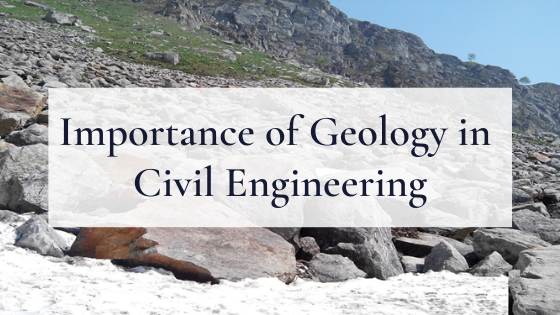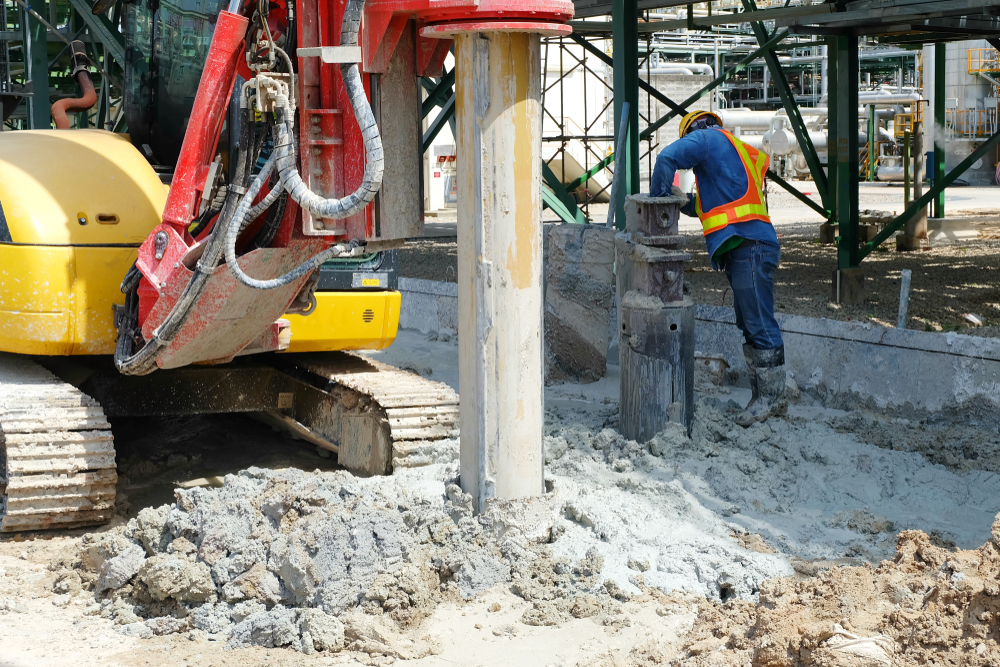The 5-Minute Rule for Geotechnical Engineering For Construction Projects
Little Known Questions About Geotechnical Engineering For Construction Projects.
Table of ContentsThe Ultimate Guide To Geotechnical Engineering For Construction ProjectsFascination About Geotechnical Engineering For Construction ProjectsGeotechnical Engineering For Construction Projects for DummiesThe 2-Minute Rule for Geotechnical Engineering For Construction ProjectsGeotechnical Engineering For Construction Projects Fundamentals ExplainedIndicators on Geotechnical Engineering For Construction Projects You Should KnowGetting My Geotechnical Engineering For Construction Projects To Work
Principles and Practice of Ground Enhancement. Ground Enhancement Principles And Applications In Asia. Design analysis in rock technicians.Cengage Discovering, Stamford, 666 p. Atkinson, J., 2007. The auto mechanics of soils and foundations. Taylor & Francis, N.Y., 442 p. Drifting Offshore Wind Turbines: Reactions in a Sea state Pareto Optimal Designs and Financial Evaluation, P. Sclavounos et al., October 2007. Nicholson, D, Tse, C and Cent, C. (1999 ). The Observational Technique in ground engineering principles and applications.
The Best Strategy To Use For Geotechnical Engineering For Construction Projects
Laboratory and area testing plays an important function in this procedure. By removing samples from the earth's subsurface and using a suite of examinations, geotechnical engineers can predict the practices of soil layers and review their suitability for different building and construction endeavours. The significance of geotechnical engineering in civil engineering can not be overemphasized, attributable to numerous factors: The preliminary step in any geotechnical research study includes identifying the dirt kind at the construction site.
The structure acts as the bedrock of any type of construction job. Picking the appropriate structure kind is a decision that hinges on the comprehensive analysis given by geotechnical engineering.

Geotechnical site examination is an essential action in the planning and implementation of any kind of construction task. It entails the collection and analysis of information connected to the physical properties of dirt and rock underneath a suggested building site. This details is crucial for the style and construction of risk-free, stable, and lasting structures.
The Definitive Guide to Geotechnical Engineering For Construction Projects
, additionally recognized as subsurface expedition, entails a series of tasks intended at establishing the soil, rock, and groundwater conditions at a building website. The key purposes are to recognize possible geotechnical risks, analyze the design homes of subsurface materials, and offer suggestions for the style and building and construction of structures, maintaining walls, and other structures.
This may include geological maps, aerial pictures, previous investigation reports, and historic information. The desk research study assists in recognizing prospective geotechnical problems and planning the succeeding fieldwork. Following the desk research, a website reconnaissance is carried out to visually examine the site and its environments. This includes observing the topography, drainage patterns, existing frameworks, vegetation, and any indicators of instability or erosion.
Geotechnical Engineering For Construction Projects Can Be Fun For Everyone
Shallow test pits are excavated to straight observe and example the soil and rock. This technique serves for researching the upper layers of the subsurface and determining near-surface hazards. Non-invasive geophysical methods, such as seismic refraction, ground-penetrating radar (GPR), and electric resistivity tomography (ERT), are utilized to map subsurface conditions and identify anomalies.
Soil and rock samples gathered throughout the area examination are subjected to lab screening to identify their physical and mechanical homes. Usual laboratory tests include grain dimension evaluation, Atterberg restrictions, compaction examinations, triaxial shear tests, and consolidation tests. These tests provide necessary data for geotechnical analysis and style. The information gathered from the workdesk research, website reconnaissance, field investigation, and laboratory testing are evaluated and translated to establish a thorough understanding of the subsurface conditions.
The main advantage of geotechnical website investigation is guaranteeing the safety and security and security of structures. By understanding the subsurface conditions, engineers can make foundations and various other architectural elements that can stand up to the loads and environmental forces they will certainly be subjected view publisher site to. This lessens the risk of negotiation, subsidence, and architectural failing.
The Facts About Geotechnical Engineering For Construction Projects Revealed
This guarantees reliable and secure building and construction techniques. Geotechnical website investigations are often called for by constructing codes and regulations.
This details is important for project supervisors, designers, and specialists in creating reasonable routines, spending plans, and contingency strategies. Geotechnical Engineering for Construction Projects. Skyscraper in a Coastal AreaIn a coastal city, a skyscraper residential building was intended on a website with presumed loose sand deposits and a high water table. A comprehensive geotechnical investigation, consisting of borehole drilling, CPT, and geophysical surveys, was carried out
The 6-Minute Rule for Geotechnical Engineering For Construction Projects
Based upon these searchings for, the structure style was modified to consist of deep heap foundations expanding right into stable strata, and ground improvement strategies, such as vibro-compaction, were carried out to alleviate liquefaction risks. This aggressive method made sure the safety and security and security of the building while preventing pricey post-construction removal. Infrastructure Development on a Sloping TerrainA major infrastructure project, entailing the construction of a freeway and bridges, was intended on a sloping surface with high inclines.

The Leaning Tower of Pisa (Italy), a famous architectural marvel, is well known for its unplanned tilt from substantial geotechnical problems. The tower's foundation was improperly made to deal with the soft, unsteady soil beneath it, resulting in irregular negotiation and its distinct lean. Our world is dotted with outstanding infrastructure projectsfrom towering skyscrapers to sprawling bridgesall standing testimony to the advancement of the numerous construction devices and techniques readily available.
Geotechnical design is a specific area within civil design that concentrates on researching the behavior of earth materials. This branch dives deep into the groundinvestigating just how the soil, rock, and groundwater at a building and construction website can influenceand be affected bythe facilities that we erect on and right into them. Prior to a solitary brick is laid or a concrete structure put, geotechnical engineers probe into the earthgathering vital information regarding the site's soil her response structure, rock framework, and groundwater levels.
Geotechnical Engineering For Construction Projects Things To Know Before You Buy

is a tool made use of to analyze the stability and load-bearing capability of stacks during installment, leveraging the concept of wave propagation. It maximizes building and construction efficiency by giving real-time assessments, thus making sure secure and efficient pile structures. One of the functional applications of geotechnical engineering involves deciding and implementing the ideal this approaches for structure construction.
Load driving stands for greater than the mere act of placing architectural aspects into the ground. On the other hand, it is a very carefully managed procedure of moving a structure's tons past the less secure soil layers more detailed to the surfacedown to the extra significant strata that exist below. When it comes to stack driving, take into consideration just how geotechnical engineers skillfully utilize this technique to evenly distribute the structure's weight.